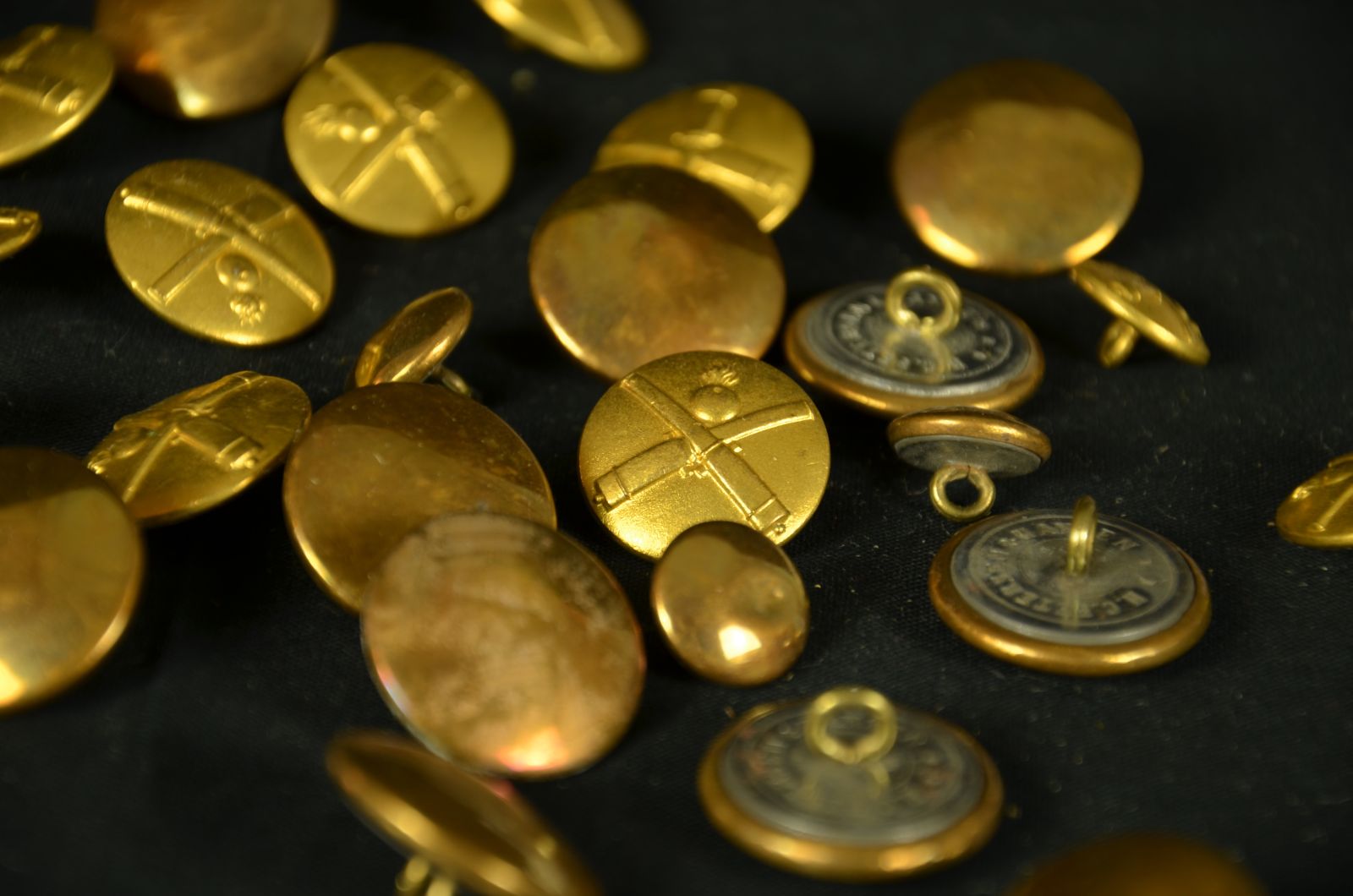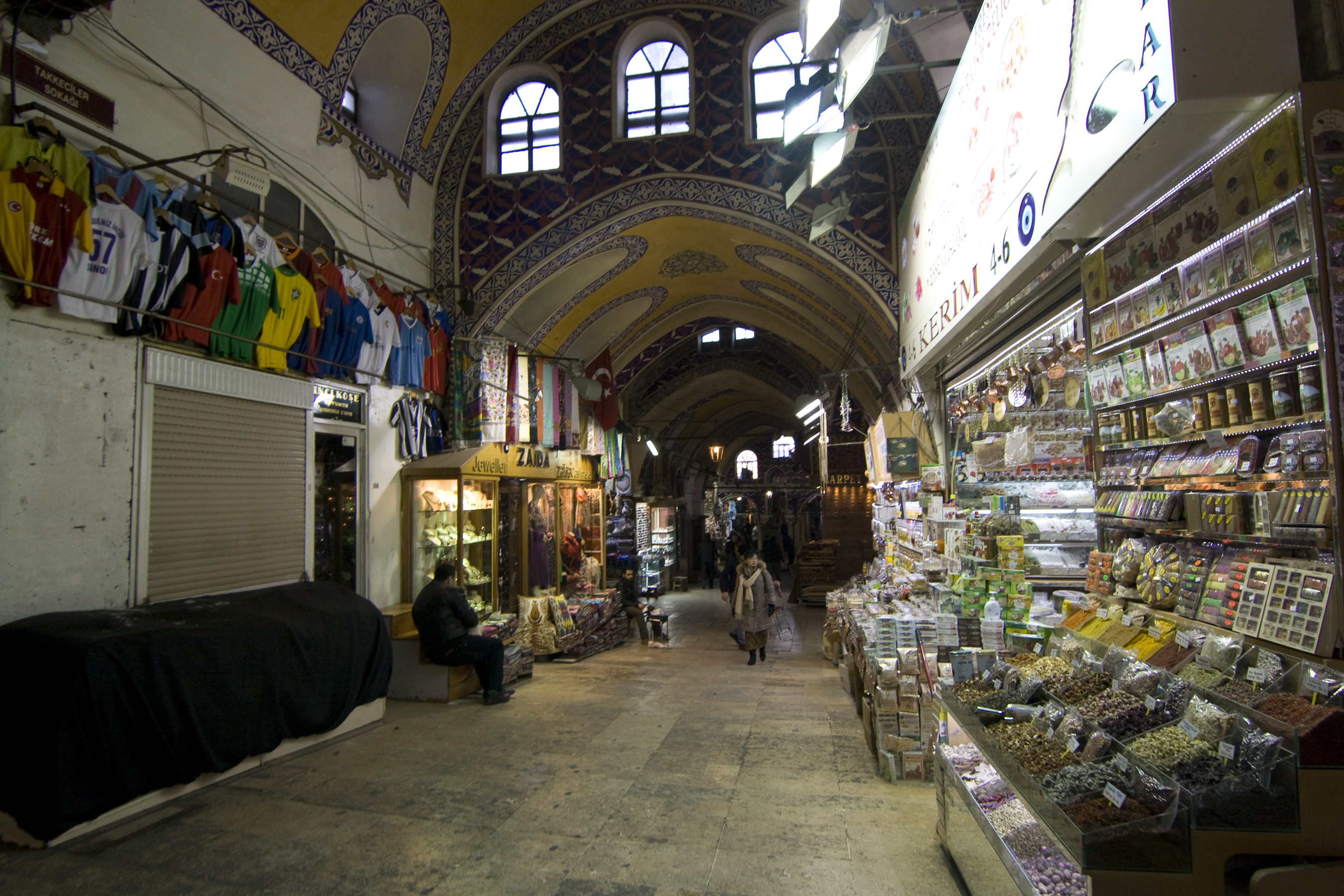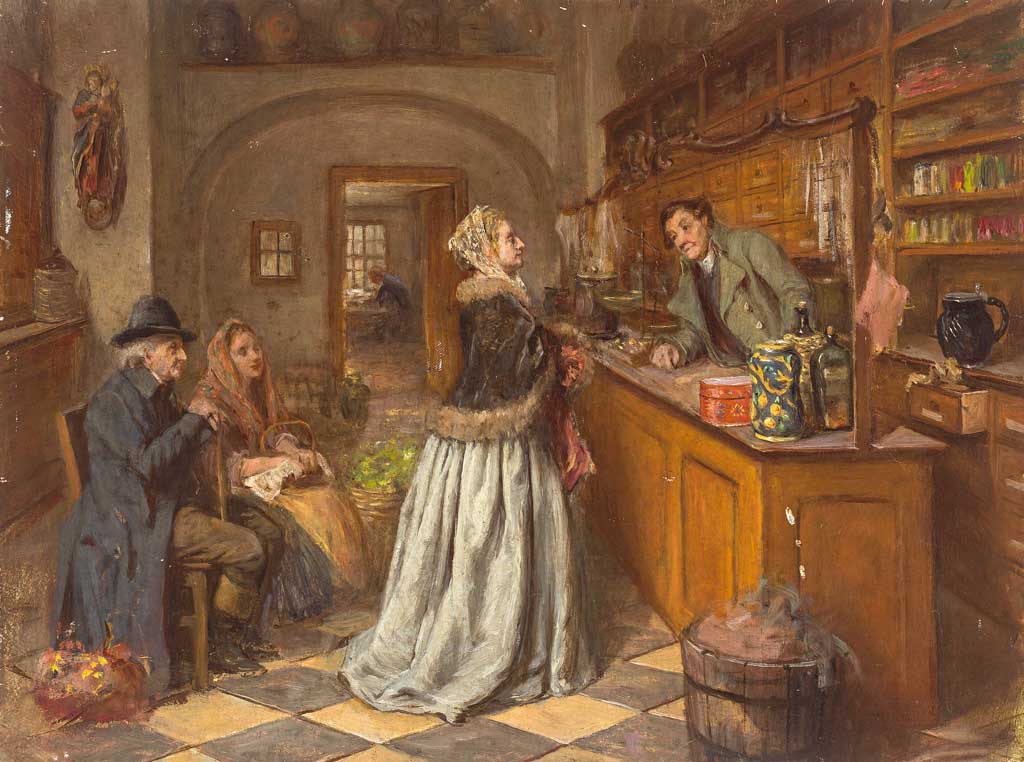|
Oechsle (retail Chain)
Oechsle () is a Peruvian retail chain owned by Tiendas Peruanas S.A., a subsidiary of conglomerate '. Originally established as Casa Oeschle during the 19th century by A.F. Oechsle and best known for its Art Nouveau building at the Plaza Mayor, designed by French architect Claude Sahut. It closed in 1993 due to the Lost Decade (Peru), economic crisis and Internal conflict in Peru, internal conflict of the country, permanently reopening in 2009. History Casa Oechsle was the name under which the German Peruvians, German immigrant Fernando Augusto Oechsle opened a small store in July 1888, initially dedicated to the sale of Thread (yarn), threads, lace and buttons imported from Europe. It replaced ''Harten y Cía.'' in 1896, founded by fellow German Juan Harten in 1888. The business expanded and gained a lot of prestige throughout the city as a result of an exclusive offer, made up of imported products, among which textiles, perfumes, decorative items and even toys stood out. It wa ... [...More Info...] [...Related Items...] OR: [Wikipedia] [Google] [Baidu] |
Lima
Lima ( ; ), originally founded as Ciudad de Los Reyes (City of The Kings) is the capital and the largest city of Peru. It is located in the valleys of the Chillón, Rímac and Lurín Rivers, in the desert zone of the central coastal part of the country, overlooking the Pacific Ocean. Together with the seaside city of Callao, it forms a contiguous urban area known as the Lima Metropolitan Area. With a population of more than 9.7 million in its urban area and more than 10.7 million in its metropolitan area, Lima is one of the largest cities in the Americas. Lima was named by natives in the agricultural region known by native Peruvians as ''Limaq''. It became the capital and most important city in the Viceroyalty of Peru. Following the Peruvian War of Independence, it became the capital of the Republic of Peru (República del Perú). Around one-third of the national population now lives in its metropolitan area. The city of Lima is considered to be the political, cultural, f ... [...More Info...] [...Related Items...] OR: [Wikipedia] [Google] [Baidu] |
Button
A button is a fastener that joins two pieces of fabric together by slipping through a loop or by sliding through a buttonhole. In modern clothing and fashion design, buttons are commonly made of plastic but also may be made of metal, wood, or seashell. Buttons can also be used on containers such as wallets and bags. Buttons may be sewn onto garments and similar items exclusively for purposes of ornamentation. In the applied arts and craft, a button can be an example of folk art, studio craft, or even a miniature work of art. In archaeology, a button can be a significant artifact. History Buttons and button-like objects used as ornaments or seals rather than fasteners have been discovered in the Indian Indus Valley civilization during its Kot Diji phase (c. 2800–2600 BC), at the Tomb of the Eagles, Scotland (2200-1800 BC), and at Bronze Age sites in China (c. 2000–1500 BC) and Ancient Rome. Buttons made from seashell were used in the Indus Valley Civilization ... [...More Info...] [...Related Items...] OR: [Wikipedia] [Google] [Baidu] |
Retail Companies Established In 2009
Retail is the sale of goods and services to consumers, in contrast to wholesaling, which is sale to business or institutional customers. A retailer purchases goods in large quantities from manufacturers, directly or through a wholesaler, and then sells in smaller quantities to consumers for a profit. Retailers are the final link in the supply chain from producers to consumers. Retail markets and shops have a very ancient history, dating back to antiquity. Some of the earliest retailers were itinerant peddlers. Over the centuries, retail shops were transformed from little more than "rude booths" to the sophisticated shopping malls of the modern era. In the digital age, an increasing number of retailers are seeking to reach broader markets by selling through multiple channels, including both bricks and mortar and online retailing. Digital technologies are also affecting the way that consumers pay for goods and services. Retailing support services may also include the pr ... [...More Info...] [...Related Items...] OR: [Wikipedia] [Google] [Baidu] |
Retail Companies Disestablished In 1993
Retail is the sale of goods and services to consumers, in contrast to wholesaling, which is sale to business or institutional customers. A retailer purchases goods in large quantities from manufacturers, directly or through a wholesaler, and then sells in smaller quantities to consumers for a profit. Retailers are the final link in the supply chain from producers to consumers. Retail markets and shops have a very ancient history, dating back to antiquity. Some of the earliest retailers were itinerant peddlers. Over the centuries, retail shops were transformed from little more than "rude booths" to the sophisticated shopping malls of the modern era. In the digital age, an increasing number of retailers are seeking to reach broader markets by selling through multiple channels, including both bricks and mortar and online retailing. Digital technologies are also affecting the way that consumers pay for goods and services. Retailing support services may also include the provi ... [...More Info...] [...Related Items...] OR: [Wikipedia] [Google] [Baidu] |
Retail Companies Established In 1988
Retail is the sale of goods and services to consumers, in contrast to wholesaling, which is sale to business or institutional customers. A retailer purchases goods in large quantities from manufacturers, directly or through a wholesaler, and then sells in smaller quantities to consumers for a profit. Retailers are the final link in the supply chain from producers to consumers. Retail markets and shops have a very ancient history, dating back to antiquity. Some of the earliest retailers were itinerant peddlers. Over the centuries, retail shops were transformed from little more than "rude booths" to the sophisticated shopping malls of the modern era. In the digital age, an increasing number of retailers are seeking to reach broader markets by selling through multiple channels, including both bricks and mortar and online retailing. Digital technologies are also affecting the way that consumers pay for goods and services. Retailing support services may also include the provision of ... [...More Info...] [...Related Items...] OR: [Wikipedia] [Google] [Baidu] |
Internal Conflict In Peru
The internal conflict in Peru is an ongoing armed conflict between the Government of Peru and the Maoist guerilla group Shining Path. The conflict began on 17 May 1980, and from 1982 to 1997 the Túpac Amaru Revolutionary Movement waged its own insurgency as a Marxist–Leninist rival to the Shining Path. It is estimated that there have been between 50,000 and 70,000 deaths, making it the bloodiest war in Peruvian history, since the European colonization of the country. The high death toll includes many civilian casualties, due to deliberate targeting by many factions. Since 2000, the number of deaths has dropped significantly and recently the conflict has become dormant. There were low-level resurgences of violence in 2002 and 2014 when conflict erupted between the Peruvian Army and guerrilla remnants in the Valle de los Ríos Apurímac, Ene y Mantaro region. The conflict has lasted for over 40 years, making it the second longest internal conflict in the history of Latin Ame ... [...More Info...] [...Related Items...] OR: [Wikipedia] [Google] [Baidu] |
Supermercados Monterey
''Supermercados Monterey'', originally written ''Monterrey'', was a Peruvian supermarket chain created in 1954, in Lima. It also operated in Arequipa, Trujillo, Chiclayo, Cuzco, Piura, Sullana and Talara until its closure in 1993 due to the economic crisis and internal conflict of the country. History The company was founded in 1954 as ''Casa Monterrey'' by the Swiss Bruno Tschudi and the Benavides family, current owners of ''Compañía de Minas Buenaventura'', opening its first store in the 54th block of the Jirón de la Unión. It opened up to 16 stores in the city, in the districts of Miraflores, San Isidro, Surco and the Cercado. Its original name eventually changed its spelling due to a legal battle, as it was identical to that of a store in Arequipa. It was sold to the Lau family in 1991, closing in the early months of 1993 due to the economic crisis of the time. See also *Supermercados Peruanos Supermercados Peruanos S.A. (Spanish: ''Peruvian Supermarkets'') is a Per ... [...More Info...] [...Related Items...] OR: [Wikipedia] [Google] [Baidu] |
Ministry Of Culture (Peru)
The Ministry of Culture of Peru is the government ministry in charge of the promotion of peruvian culture and identity. It was created on 20 July 2010, during the government of Alan García. The inaugural minister was Juan Ossio Acuña after his appointment on 4 September 2010. , the culture minister is Silvana Robles. List of Culture Ministers External links Official website Peru Peru, Culture Culture Culture () is an umbrella term which encompasses the social behavior, institutions, and norms found in human societies, as well as the knowledge, beliefs, arts, laws, customs, capabilities, and habits of the individuals in these grou ... Peruvian culture {{Culture-ministry-stub ... [...More Info...] [...Related Items...] OR: [Wikipedia] [Google] [Baidu] |
Medium
Medium may refer to: Science and technology Aviation *Medium bomber, a class of war plane * Tecma Medium, a French hang glider design Communication * Media (communication), tools used to store and deliver information or data * Medium of instruction, a language or other tool used to educate, train, or instruct Wave physics * Transmission medium, in physics and telecommunications, any material substance which can propagate waves or energy ** Active laser medium (also called gain medium or lasing medium), a quantum system that allows amplification of power (gain) of waves passing through (usually by stimulated emission) ** Optical medium, in physics, a material through with electromagnetic waves propagate * Excitable medium, a non-linear dynamic system which has the capacity to propagate a wave Other uses in science and technology * Data storage medium, a storage container in computing * Growth medium (or culture medium), in biotechnology, an object in which microorganism ... [...More Info...] [...Related Items...] OR: [Wikipedia] [Google] [Baidu] |
Blog PUCP
Pontifical Catholic University of Peru ( es, link=no, Pontificia Universidad Católica del Perú, PUCP) is a private university in Lima, Peru. It was founded in 1917 with the support and approval of the Catholic Church, being the oldest private institution of higher learning in the country. The person who dealt the necessary formalities was Catholic priest Jorge Dintilhac. The Peruvian historian and politician José de la Riva-Agüero y Osma would become his main benefactor by leaving him most of his assets as an inheritance, as it was then a more religious educational institution and linked to the Catholic Church; in contrast to his alma mater and original destination of his inheritance, the National University of San Marcos, where Riva-Agüero considered that liberal ideas and atheism predominated here. In July 2012, after an apostolic visitation, begun earlier, in 2011, by Peter Erdo, Archbishop of Esztergom-Budapest, Hungary, the Holy See withdrew from the university the ri ... [...More Info...] [...Related Items...] OR: [Wikipedia] [Google] [Baidu] |
Pasaje Olaya
Pasaje José Olaya is a pedestrian alleyway located in the Damero de Pizarro, next to the Plaza Mayor of Lima, Peru. It is the location of a statue of the same name, which was declared part of the Cultural heritage of Peru alongside the other statues located within the historic centre of Lima in 2018. History The alleyway dates back to the foundation of the city, taking several names throughout its history. It was originally called the ''Cajellón de la Cruz'' due to it being the location of a cross used to punish criminals in its exit towards the Plaza Mayor. By 1613, it took the name ''Callejón de los Sombrereros'' due to the number of hat-selling businesses there, alternatively called the ''Callejón de los Mercaderes''. One of its merchants, Juan Fernández de la Higuera, was the namesake for block 2 of nearby Jirón Cuzco. It also took the name ''Callejón de los Clérigos'' at one point. Its last name after independence, ''Callejón de Petateros'', had existed since the la ... [...More Info...] [...Related Items...] OR: [Wikipedia] [Google] [Baidu] |
Jirón Huallaga
Jirón Huallaga is a major street in the Damero de Pizarro, located in the historic centre of Lima, Peru. The street starts at its intersection with the Jirón de la Unión at the Plaza Mayor and continues until it reaches Jirón Cangallo in Barrios Altos, about a block after it passes through the Plaza Italia. History The road that today constitutes the Huallaga jirón was laid by Francisco Pizarro when he founded the city of Lima on January 18, 1535. In its first block, to the north, the extension corresponding to the Plaza de Armas was arranged and in its second block, also to the north, the land corresponding to the priest's home and intended for the construction of the church. In 1538 the construction of the first church in Lima was completed. This church was rebuilt and renovated several times, taking its final form in 1797. This street is where the Almagrist supporters who murdered Francisco Pizarro came from in 1546. In the 1560s, the Viceroy Count of Nieva ordered the ... [...More Info...] [...Related Items...] OR: [Wikipedia] [Google] [Baidu] |

%2C_Guamán_Poma%2C_1616.jpg)




